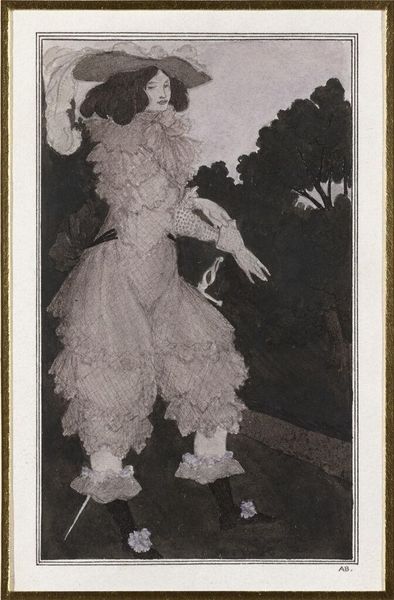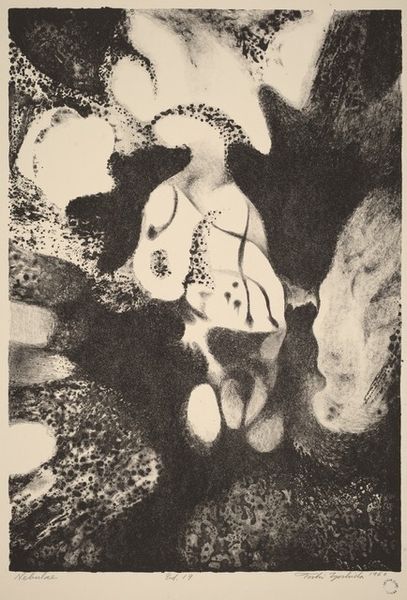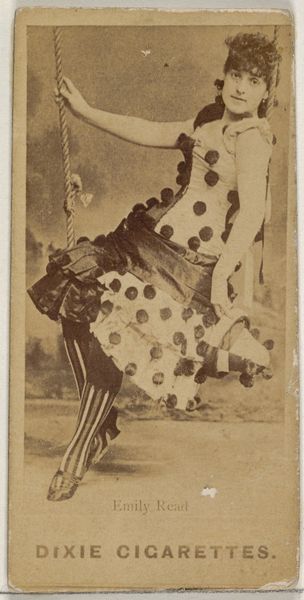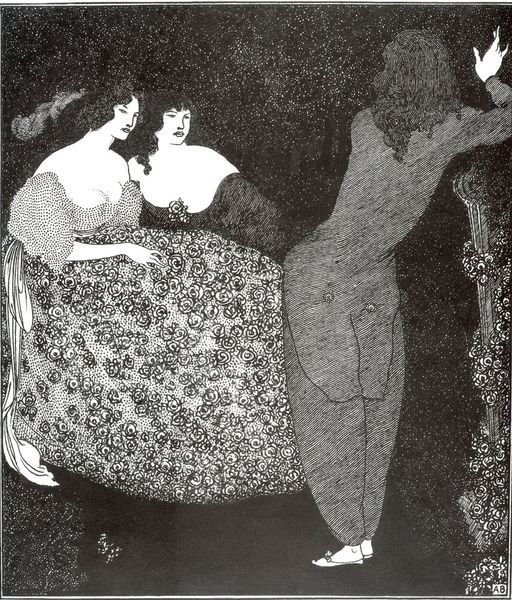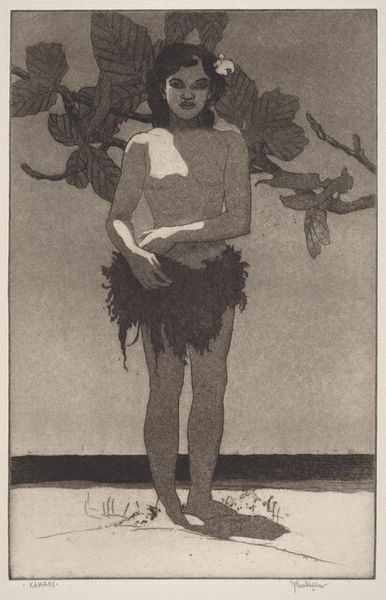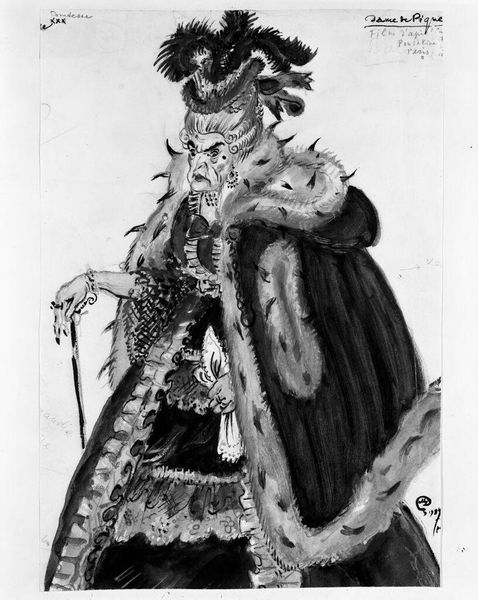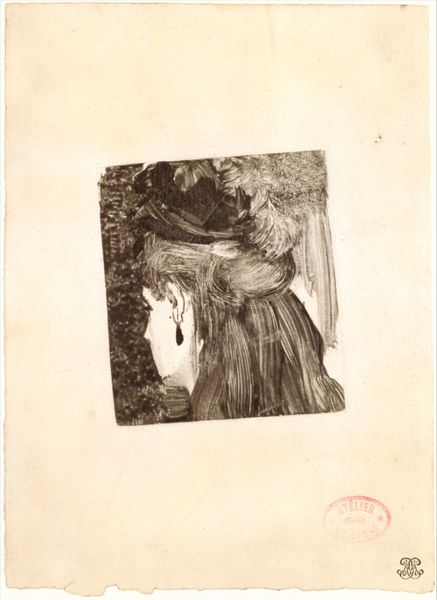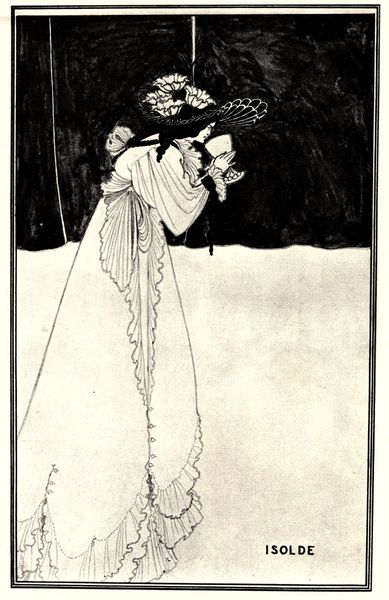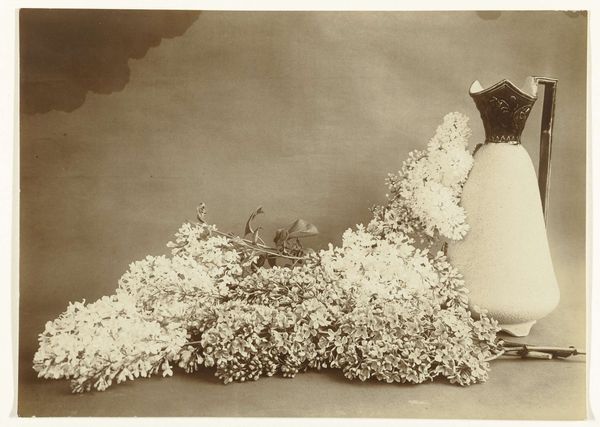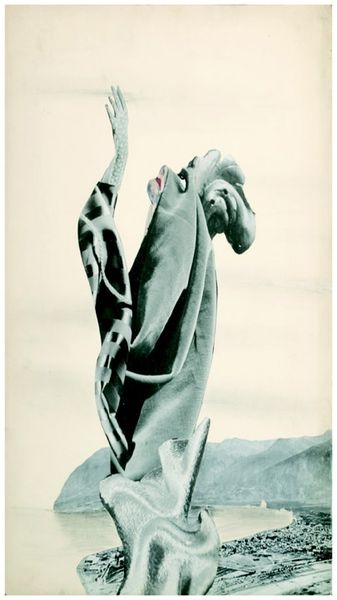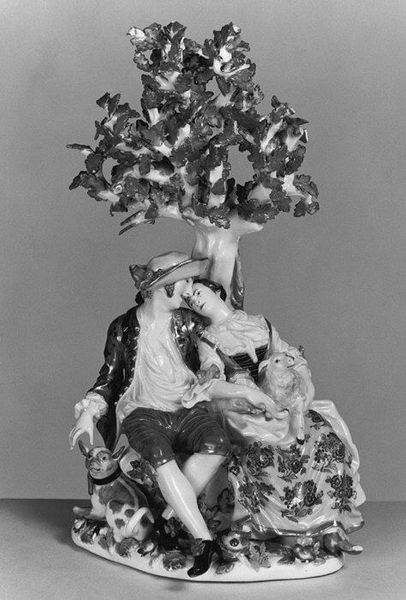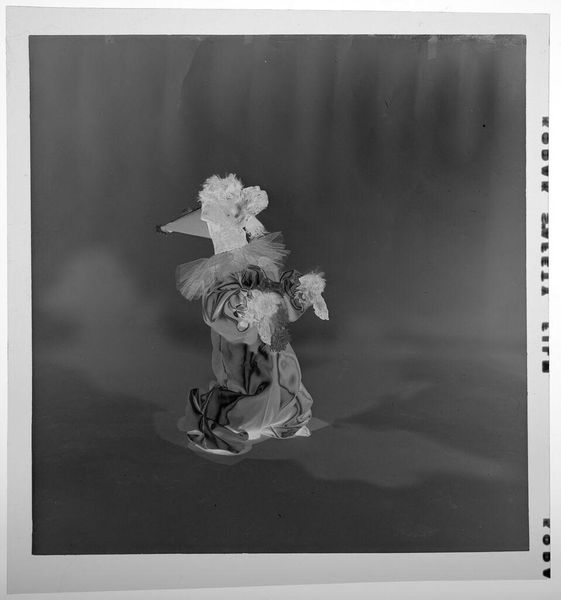
drawing, print
#
portrait
#
drawing
#
art-nouveau
# print
#
figuration
#
aesthetic-movement
#
line
Copyright: Public domain
Editor: This is Aubrey Beardsley's "Mademoiselle de Maupin" from 1897, a drawing and print. I'm struck by how meticulously the textures of the costume are rendered; the frills seem almost to pop off the page. What do you see in this work? Curator: For me, it’s less about the individual figure and more about understanding the production of images like these at the turn of the century. Beardsley's engagement with printmaking opens up a dialogue on the accessibility of art. We should consider how advancements in printing technology impacted the creation and dissemination of his work. The labour involved, and the accessibility afforded, disrupt any traditional definition of art as a precious, singular object. Editor: That’s a fascinating point! I hadn’t considered the labor and distribution aspects so much, more the artistic intent behind it. Do you think that the relative ease of creating prints, compared to painting, diminishes Beardsley’s artistry somehow? Curator: Not at all! Instead, consider how this accessibility redefines it. Beardsley was acutely aware of his audience, and his deliberate use of print allowed him to engage with them directly in a changing, industrialising world. The stark black and white itself speaks to the mechanics of reproduction. His choices weren't just aesthetic, but social. How does the use of the material challenge conventional high/low art boundaries for you? Editor: That’s really clarified things for me. Thinking about Beardsley’s prints as a response to his socio-economic environment is more exciting than thinking about aesthetics only. Thanks! Curator: Exactly. It forces us to rethink the power dynamics inherent in art production and consumption. I am glad to bring it into perspective.
Comments
No comments
Be the first to comment and join the conversation on the ultimate creative platform.
